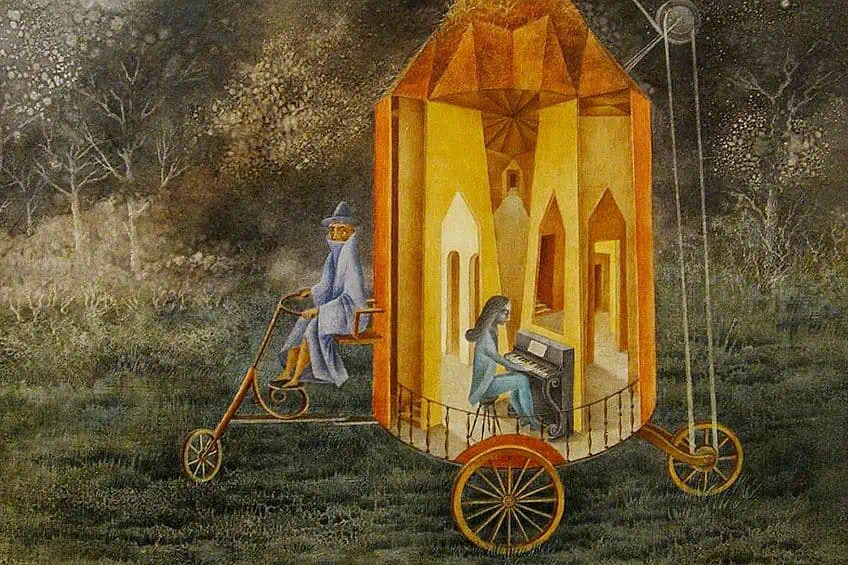Famous Spanish Artists and Painters – Explore the Top 15
Spain has remained the birthplace of many brilliant and challenging works of art, that reflect its complicated history with the rest of Europe and the many historical events of its civilians. Artists from Spain have captured the essence of Spain and produced many unique art styles and creative ensembles that have not only brought Spain to the forefront of some of the most influential art historical canons, but have also cemented many famous Spanish paintings in art history and art education literature. In this article, we will introduce you to the best of Spanish talent and include a summarized list of the top 15 most famous Spanish artists and painters of all time! Keep on reading for more about the diverse talent of Spain throughout the last five centuries.
The Best of Spanish Talent
When exploring the best of Spanish talent in art history, it is worth revisiting the many art movements and influential developments that have emerged from the country’s creative economy. One cannot acknowledge Western art without praising the Spanish’s contribution to the field. Many famous Spanish painters often traveled abroad to gain inspiration and returned to collate their thoughts and experiences and create some of the most exceptional artworks.

One of the major influential cities was, of course, Paris, where many artists convened and shared their visions for the future of art. The cultural developments of Paris as seen through its lavish nightlife and bohemian culture were a place where many Spanish artists reloaded on their artistic fuel throughout the 20th century. Popular art movements that lit the path forward for Modernist art styles include Cubism, protest art, and Synthetic Cubism, which not only introduced innovative ways of seeing and making in sculpture and painting but also altered other artists’ perceptions of the world and how one might shift the general perception of art history.
Protest art was another form of art that was piloted by many Spanish artists and painters with art masters such as Pablo Picasso, who highlighted the atrocities of unrest.
The Top 15 Most Famous Spanish Artists and Painters
From the Spanish Renaissance through to the works of early Modernists and Contemporary painters, below you will find a summarized list of the top 15 most famous Spanish artists and painters of all time!
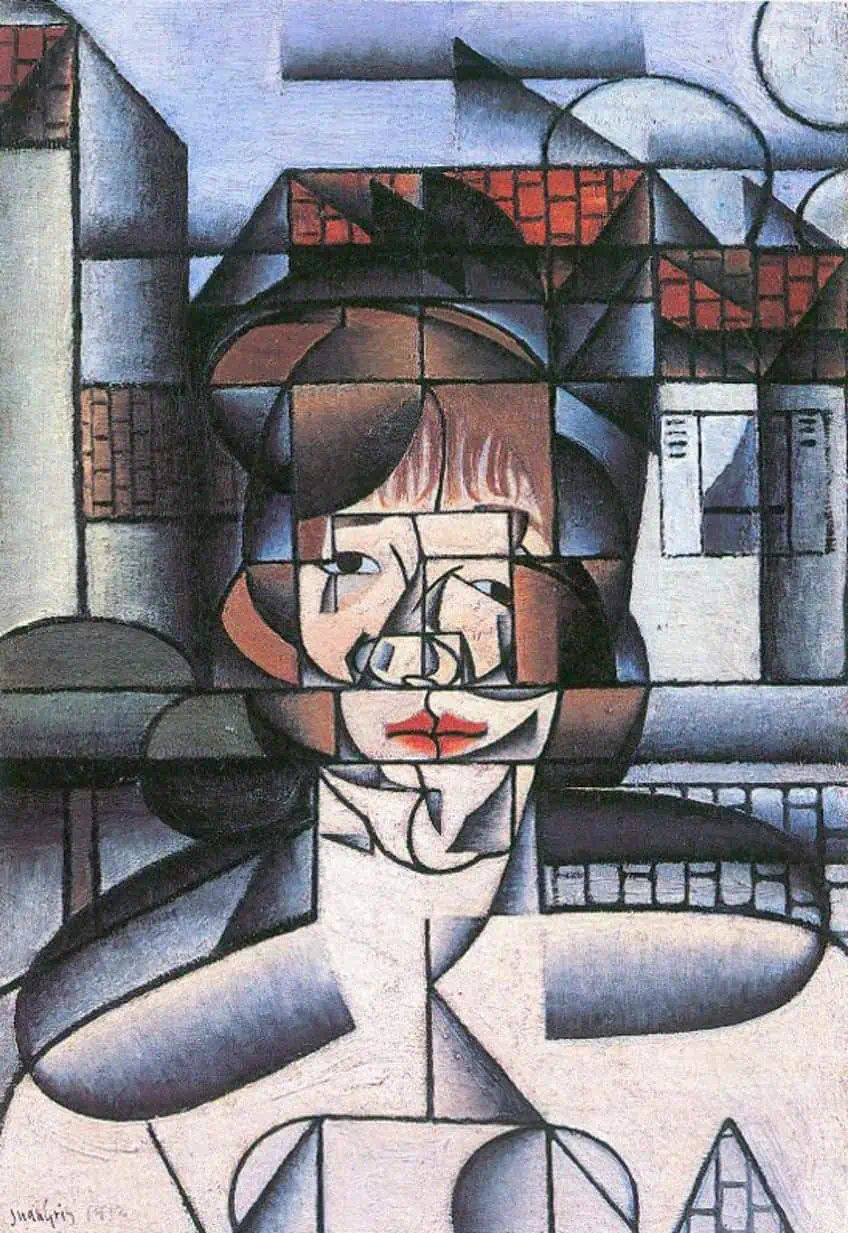
Francisco de Zurbarán (1598 – 1664)
| Name | Francisco de Zurbarán |
| Date of Birth | 7 November 1598 |
| Date of Death | 27 August 1664 |
| Nationality | Spanish |
| Associated Movements, Themes, and Styles | Spanish Baroque, Religious art, Still-life, and Caravaggisti |
| Mediums | Painting |
| Famous Artworks | ● The Crucifixion (1627) ● The Apotheosis of Saint Thomas Aquinas (1631) ● St. Francis (1632) ● The Young Virgin (1633) ● Agnus Dei (1640) |
Born in Extremadura, Francisco de Zurbarán was to become one of the most prolific Spanish Baroque painters in art history who was most famous for his superb mastery of the chiaroscuro technique. Zurbarán’s subjects included religious themes, still-lifes, and portraits of religious figures. Zurbarán also served as a painter under King Philip IV of Spain in the first quarter of the 17th century. Zurbarán’s relocation to Madrid only occurred much later on in his life when he reestablished his relationship with famed painter Diego Velázquez.
Some of the Spanish artist’s paintings and celebrated works include The Apotheosis of Saint Thomas Aquinas (1631) altarpiece, St. Francis (1632), and Agnus Dei (1640) among many other dramatically lit religious paintings.
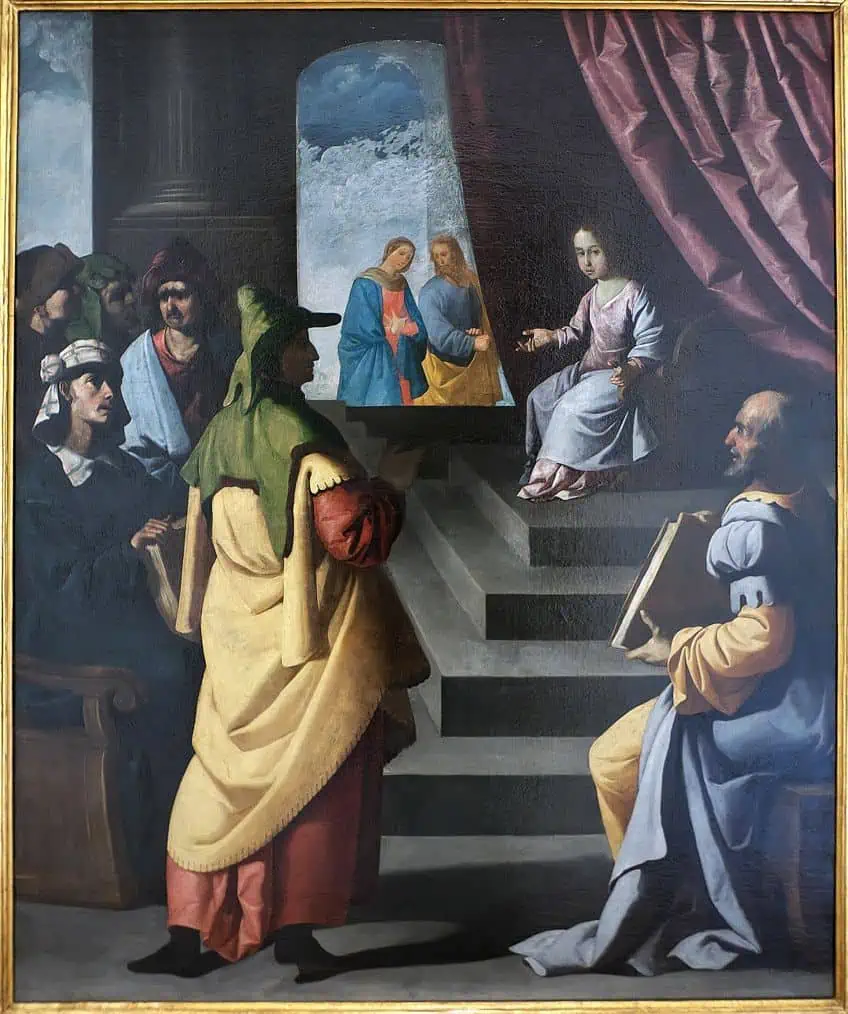
Diego Velázquez (1599 – 1660)
| Name | Diego Rodríguez de Silva y Velázquez |
| Date of Birth | 6 June 1599 |
| Date of Death | 6 August 1660 |
| Nationality | Spanish |
| Associated Movements, Themes, and Styles | Spanish Baroque |
| Mediums | Painting |
| Famous Artworks | ● La Rendición de Breda (1634 – 1635) ● Rokeby Venus (1647) ● Portrait of Innocent X (1650) ● Las Meninas (1656) |
Largely employed as a court painter for King Philip IV, Diego Velázquez was one of the most famous Spanish painters of all time who is best known for his painting Las Meninas (1656), which can be viewed at the Museo del Prado in Madrid. Velázquez was a leader of the Spanish Golden era and specialized in Baroque painting for the Spanish court. He was recognized as an individualistic painter who inspired many 19th-century Realists and Impressionists, including Francis Bacon and Salvador Dalí.
The majority of Velázquez’s works joined the Spanish Royal Collection and have since been a foundational cornerstone for Spanish art.
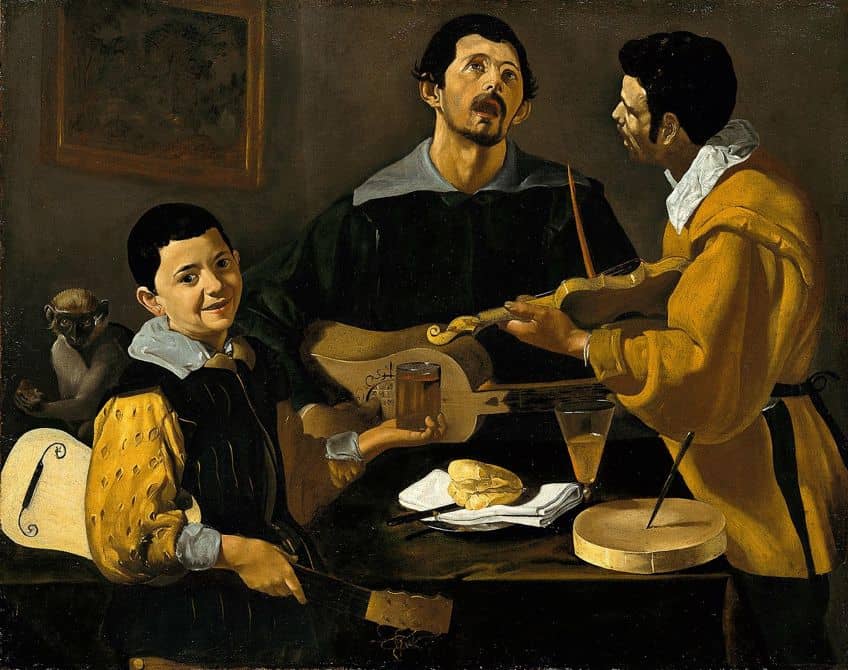
Bartolomé Esteban Murillo (1617 – 1682)
| Name | Bartolomé Esteban Murillo |
| Date of Birth | December 1617 |
| Date of Death | 3 April 1682 |
| Nationality | Spanish |
| Associated Movements, Themes, and Styles | Caravaggisti and Spanish Baroque |
| Mediums | Painting and drawing |
| Famous Artworks | ● Two Women at a Window (1655 – 1660) ● The Young Beggar (1658) ● The Little Fruitseller (1675) ● The Immaculate Conception of Los Venerables (1678) |
Bartolomé Esteban Murillo was a master Spanish artist and painter whose works reflect his admiration of both religious and Contemporary scenes. Murillo’s work featured realistic renditions of young children and women seen in multiple portraits, which showcase the artist’s expert hand at Baroque painting styles. It has been theorized that Murillo developed his artistic eye by studying the natural world and painting for hours on end in his room to hone his skills. Murillo’s talents inspired many artists following his generation and reverberated throughout Europe and Spain for centuries to follow.
Some of the Spanish artist’s paintings include The Adoration of the Shepherds (c. 1650) and The Immaculate Conception of Los Venerables (1678) among many other prolific works.

Francisco de Goya (1746 – 1828)
| Name | Francisco José de Goya y Lucientes |
| Date of Birth | 30 March 1746 |
| Date of Death | 16 April 1828 |
| Nationality | Spanish |
| Associated Movements, Themes, and Styles | Romanticism, Rococo, politics, and portraiture |
| Mediums | Painting, drawing, and engraving |
| Famous Artworks | ● The Parasol (1777) ● La Maja Desnuda (1800) ● The Third of May 1808 (1814) ● Saturn Devouring His Son (1821 – 1823) |
Francisco de Goya was one of the leading Spanish Romantic artists of the 18th century whose paintings traverse both the weird, unnatural and evocative. Goya is recognized as the last of the old masters in Spanish art history who achieved a tremendous amount of success during his tenure. He was most famous for his painting The Third of May 1808 (1814), which emphasized the political resistance on the Spaniards’ part in the face of Napoleonic forces and outlined alternative ways for the representation of the dark impact of war. Goya was also recognized as a court painter and elected as such under the Spanish Crown around 1786. His early painting style developed from Rococo-styled portraits of noble subjects to progressively grim and dark subjects that tackled politics and Goya’s personal encounters with death, loss, grief, and misfortune.
Other notable works by Goya include La Maja Desnuda (1800) and Saturn Devouring His Son (1821 – 1823).
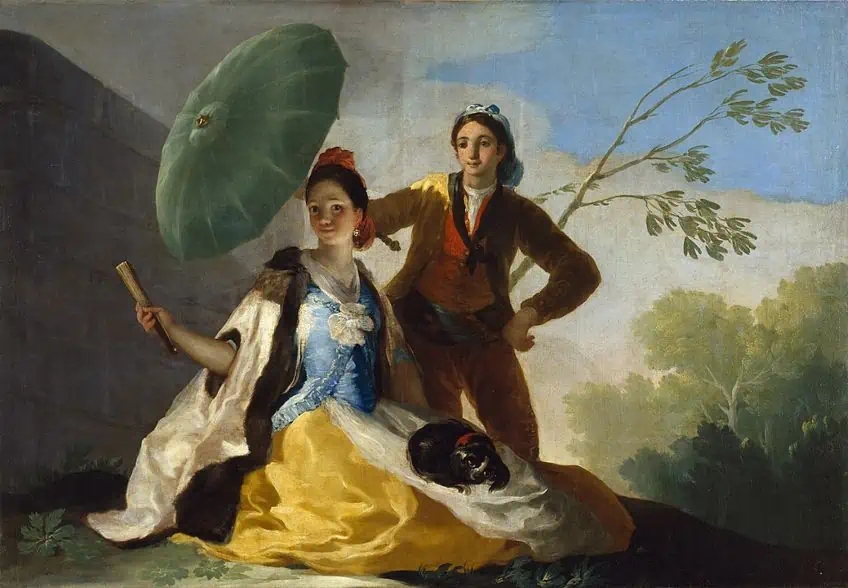
Joaquín Sorolla (1863 – 1923)
| Name | Joaquín Sorolla y Bastida |
| Date of Birth | 27 February 1863 |
| Date of Death | 10 August 1923 |
| Nationality | Spanish |
| Associated Movements, Themes, and Styles | Luminism, Impressionism, portraiture, landscape art, and historical narratives |
| Mediums | Painting |
| Famous Artworks | ● Sewing the Sail (1896) ● Sad Inheritance (1899) ● The Horses Bath (1909) ● Boys on the Beach (1910) ● The Pink Robe (1916) |
Impressionist painter Joaquín Sorolla was among one of the most famous Spanish artists and painters of the Impressionist movement who created many stunning portraits and figural artworks of society as he experienced and witnessed it. Sorolla was most famous for his historical, social, and landscape artworks, which carry his signature approach rooted in Luminism. Many of his paintings highlight the brightness of the sunlight or rely on the lighting of the natural environment to give his works a positive, fresh, and uplifting atmosphere that pleases the eye. Sorolla generated more than 2,000 paintings throughout his career and was a highly influential figure to many Spanish artists, including Julio Romero de Torres and Alberto Rubio.
A few stunning artworks from Sorolla’s oeuvre include Señora de Sorolla in Black (1906) and Castilla (1913) among many other famous Sorolla paintings.

Pablo Picasso (1881 – 1973)
| Artist Name | Pablo Ruiz Picasso |
| Date of Birth | 25 October 1881 |
| Date of Death | 8 April 1973 |
| Nationality | Spanish |
| Associated Movements, Themes, and Styles | Cubism, Modern art, and Surrealism |
| Mediums | Painting, sculpture, printmaking, and theater design |
| Famous Artworks | ● The Old Guitarist (1904) ● Les Demoiselles d’Avignon (1907) ● Man with Guitar (1912) ● Guernica (1937) |
Multimedia Spanish artist and Cubist Pablo Picasso was best known for his assemblages and Cubist sculptures inspired by the Fauvist movement. Some of his most famous paintings include The Old Guitarist (1904) and Guernica (1937), which many can easily recognize as the masterwork of Picasso through the morose color palette and grim subject matter. Aside from critics pointing out the artist’s misogyny and objectification of women as sore points in his career, major works such as Guernica speak to anti-war and Modern forms of protest art that evoke any viewer’s emotions by highlighting the atrocities of war on innocent civilians and animals.
Major historical events such as the Spanish Civil War was the height of such atrocity in Spain and artists like Picasso successfully captured key moments in history while piloting influential art styles.
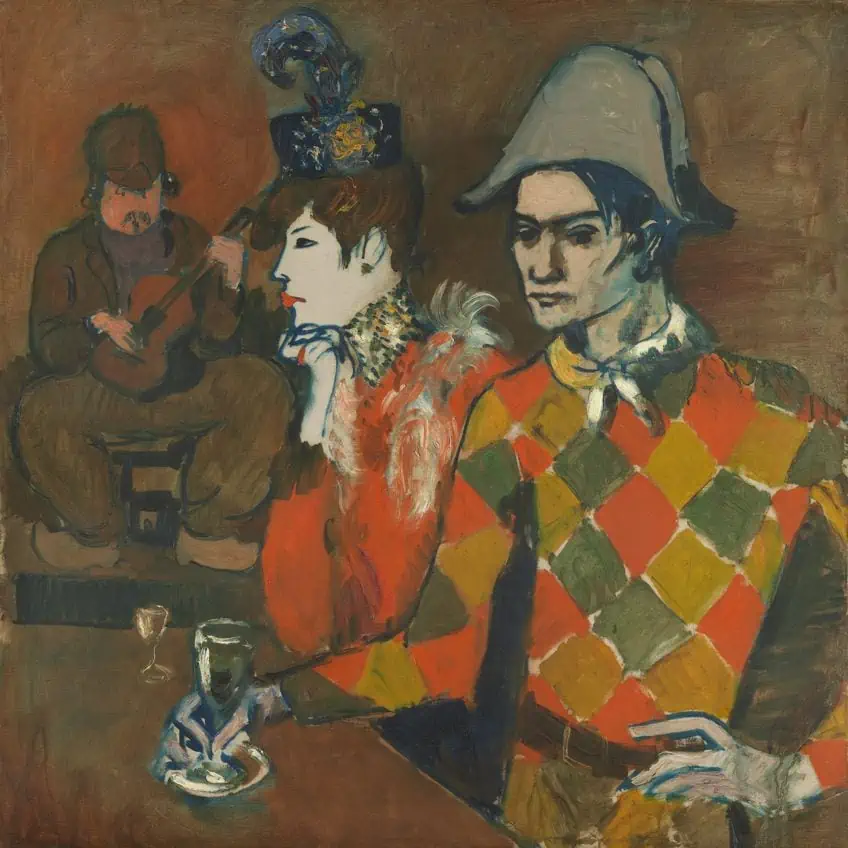
Juan Gris (1887 – 1927)
| Name | José Victoriano González-Pérez (also known as Juan Gris) |
| Date of Birth | 23 March 1887 |
| Date of Death | 11 May 1927 |
| Nationality | Spanish |
| Associated Movements, Themes, and Styles | Cubism, Analytical Cubism, Modern art, and Synthetic Cubism |
| Mediums | Painting, illustration, and drawing |
| Famous Artworks | ● Portrait of the Artist (1912) ● Guitar on a Table (1915) ● Portrait of Josette Gris (1916) ● The Open Window (1921) ● The Musician’s Table (1926) |
Madrid-born artist Juan Gris was one of the early pioneers of Cubism who taught Picasso. Gris was also a ballet set and costume designer in the early 20th century who provided design services to Sergei Diaghilev and went on to develop many of his art theories over the first quarter of the 20th century. Gris developed and explored his personal style through Cubism after working as a satirical cartoonist. Many of his works reflected a monochromatic style of painting with his preference for relaying a sense of order and clarity as part of his visual language. One of Gris’ most expensive works, Nature Morte à la Nappe à Carreaux (1915), sold on auction for $57.1 million with other works priced within a similar range.
Today, many of his best pieces are housed at museums and institutions across America, including the Metropolitan Museum of Art in New York as well as in Madrid at the Queen Sofia Museum.

Joan Miró (1893 – 1983)
| Name | Joan Miró i Ferrà |
| Date of Birth | 20 April 1893 |
| Date of Death | 25 December 1983 |
| Nationality | Spanish |
| Associated Movements, Themes, and Styles | Expressionism and Surrealism |
| Mediums | Painting, sculpture, and ceramics |
| Famous Artworks | ● The Farm (1922) ● The Tilled Field (1924) ● Still Life with Old Shoe (1937) ● Bleu I – III (c. 1960s) ● Woman and Birds in the Night (1974) |
Joan Miró was a pioneer of the Spanish Expressionist and Surrealist movements who created many bold and interpretive works of art. Miró was recognized on a global scale and received significant attention during his lifetime. His works draw out his personal experiences of the subconscious and conscious world, which highlight the influence of Surrealist approaches in Miró’s paintings. His style was also informed by movements such as Fauvism, Expressionism, and Cubism, which reinforced his preference for less bourgeois styles of painting and an elevation of unconventionality. Miró himself announced his aim in painting was to promote the assassination of the medium to disturb the traditional elements that it was founded on. The artist attended both art and business school and was heavily influenced by artists such as Vincent van Gogh who appealed to Miró’s experiences with mental health issues.
Some of Miró’s most famous artworks include Nord-Sud (1917) and Miró’s Chicago (1979-1981).

Salvador Dalí (1904 – 1989)
| Artist Name | Salvador Domingo Felipe Jacinto Dalí i Domènech |
| Date of Birth | 11 May 1904 |
| Date of Death | 23 January 1989 |
| Nationality | Spanish |
| Associated Movements, Themes, and Styles | Dada, Surrealism, Modern art, Cubism, Mysticism, Classicism, religion, sexuality, science, dreams, and the subconscious |
| Mediums | Painting, sculpture, graphic design, film, photography, and poetry |
| Famous Artworks | ● The Great Masturbator (1929) ● The Persistence of Memory (1931) ● Soft Construction with Boiled Beans (Premonition of Civil War) (1936) ● Metamorphosis of Narcissus (1937) |
Salvador Dalí was perhaps one of the best-known Spanish artists and painters of the 20th century whose works hold unique value in European art and Surrealism for their strange and captivating compositions. Dalí integrated many famous Spanish landscapes into his works and combined elements from the real world with visual guidance and hints from his dream world. The Catalonian artist was influenced by artists from the Renaissance as well as the Avant-Garde and Impressionism, which culminated in his works reflecting a fusion of nuclear art styles that defined the Surrealist movement. Dalí was also invested in the exploration of mysticism and its relationship with the Catholic faith, classicism, and science.
Among the Spanish artist’s paintings and most thought-provoking works include The Persistence of Memory (1931), and Metamorphosis of Narcissus (1937) as well as collaborative works such as Lobster Telephone (1937).
Remedios Varo (1908 – 1963)
| Name | María de los Remedios Alicia Rodriga Varo y Uranga |
| Date of Birth | 16 December 1908 |
| Date of Death | 8 October 1963 |
| Nationality | Spanish-Mexican |
| Associated Movements, Themes, and Styles | Surrealism, religion, and Hispanic art |
| Medium(s) | Painting |
| Famous Artworks | ● El tejido de los sueños (1935) ● Gruta mágica (1942) ● The Lovers (1955) ● Vampiro (1961) ● Hacia Acuario (1961) |
Recognized as a Spanish-Mexican painter, Remedios Varos was born in a small Spanish town called Anglès to a Catholic mother and a father who worked as a hydraulic engineer. Due to the nature of Varos’ father’s work, the family moved around frequently, which exposed Varos to various cultures and disciplines. Varos’ father introduced her to different texts on mysticism, philosophy, and poetry, and supported her personal growth and development through independent thinking and critical thought. Varos’ early works covered self-portraits and portraits of her family members. Varos also attended the same school as Salvador Dalí, the Escuela de Bellas Artes, where she honed her artistic talents. Varos’ work was informed by the influence of Cubism and the Renaissance, which can be identified in her use of allegory and narrative structures that scholars described as a form of postmodern allegory. Varos also admired the works of other leading Spanish artists such as Goya and Picasso as well as Italian artist Giorgio de Chirico.
Additionally, many ideas around philosophy, psychoanalysis, and science also fueled Varos’ style and passion for the alchemical forms of Surrealist painting.

Antoni Tàpies (1923 – 2012)
| Name | Antoni Tàpies i Puig |
| Date of Birth | 12/13 December 1923 |
| Date of Death | 6 February 2012 |
| Nationality | Spanish |
| Associated Movements, Themes, and Styles | Art Informel, Contemporary art, Modern art, Dau al Set, Haute Pâte, Avant-Garde, and Abstract Expressionism |
| Mediums | Lithography, sculpture, painting, graphic design, and writing |
| Famous Artworks | ● Asia (1951) ● Grey Ochre (1958) ● Great Painting (1958) ● Calligraphique (1987) ● Head and Varnish (1990) |
One cannot discuss Spanish abstract artists without mentioning one of the backbone masters of Modern and Contemporary art, Antoni Tàpies. The Spanish mixed media artist traversed many art movements since the end of World War II and had become one of the most renowned Spanish artists of his generation. Tàpies produced many famous Spanish paintings, including works like Grey Ochre (1958) and Llibertat (1988), which piloted abstract styles of painting such as Tachisme throughout the 20th century.
Some of the art movements that Tàpies was invested in include the Haute Pâte and Art Informel movements, which were popular during post-war Spain.

Miguel Guia (1960 – Present)
| Name | Miguel Guia |
| Date of Birth | 1960 |
| Date of Death | Present |
| Nationality | Spanish |
| Associated Movements, Themes, and Styles | Precisionism, Cubism, Classical, Figurative, Modern, and Contemporary art |
| Mediums | Painting, photography, sculpture, and printmaking |
| Famous Artworks | ● Masque Cubiste Grand (2002) ● Guitariste Arlequin Grand (2003) ● Gicleé Arlequin cubiste en trois dimensions (2022) ● City’s soul reflection NY 1 (2022) |
Miguel Guia is one of the most famous Spanish painters whose Contemporary work in sculpture and particularly bronze enable conversations around subjects that evoke a sense of sincerity. Giua’s style is rooted in influences from Cubist artists such as Picasso and Dalí as well as traces of Contemporary influences as seen in his latest work Balloon girl s’échappe, which is a reference to Banksy’s Balloon Girl (2002) street artwork.
Guia’s sculptures reflect his interest in human figures and explore opportunities for interaction between the viewer and the artwork.

Lita Cabellut (1961 – Present)
| Name | Lita Cabellut |
| Date of Birth | 24 October 1961 |
| Date of Death | Present |
| Nationality | Spanish |
| Associated Movements, Themes, and Styles | Fresco, Modern, and Contemporary art |
| Medium(s) | Painting, drawing, installation, video, scenography, and poetry |
| Famous Artworks | ● Frida, The Black Pearl (2010) ● The Testimony of Black and White (2011) ● The Black Tulip (2014) ● Blind Mirror (2015) ● A Chronicle of the Infinite (2018) |
Global Contemporary Spanish painter Lita Cabellut is one of the most famous Spanish multimedia artists of the 21st century whose large-scale paintings reflect her inner world fueled by her innovative interpretation of subjects. Her works explore time, and its impact on the human body, as well as influential public figures and icons, captured through portraiture. The multi-award-winning painter and poet are based in Den Haag, the Netherlands.
Her most prominent works include her series Coco, The Testimony of Black and White (2011), The Black Tulip (2014), and A Chronicle of the Infinite (2018).

Regina Gimenez ( 1966 – Present)
| Name | Regina Gimenez |
| Date of Birth | 1966 |
| Date of Death | Present |
| Nationality | Spanish |
| Associated Movements, Themes, and Styles | Orphism, Romanticism, Abstract art, landscape art, and internal architecture |
| Mediums | Painting and collage |
| Famous Artworks | ● Untitled (2009) ● Mappa Mudo (2014) ● Sunrays series (2019) ● Iremos Al Sol -2 (2020) |
Drawing from major art styles such as Orphism and abstraction, graphic painter Regina Gimenez is one of the most famous Spanish abstract artists of the 21st century. Her works span romantic landscapes and beautiful scenes inspired by internal architecture. Gimenez also abstractly utilized collages to create organically inspired paintings and mixed-media artworks that exhibit her eye for design and fastidious color.
Circular forms dominate her works and are brought to life through the delicate placement of color and selective balance of negative space to provide abstract expressions that are easy to palate.

El Pez (1976 – Present)
| Name | El Pez |
| Date of Birth | 1976 |
| Date of Death | Present |
| Nationality | Spanish |
| Associated Movements, Themes, and Styles | Street art and Contemporary art |
| Mediums | Painting, graffiti, sculpture, and printmaking |
| Famous Artworks | ● Family Portrait (2019) ● Mission Paint Cities series (2021) ● Spezial Game (2021) ● Encuentros Urbanos series (2022) |
The creator of grinning and cheerful fish characters and other smiley figures, El Pez is one of the most famous Spanish street artists whose bright and playful street artworks have drawn in fans from around the world. El Pez grew up in Barcelona and began painting in the late 20th century. His artist name “El Pez” translates to “fish” in English and evolved from simple graffiti signatures of “El Pez” to street art and vivid paintings featuring grinning fish characters. The smile is a universal expression that was successfully popularized in El Pez’s artwork and until today, remains an iconic image that spreads joy and happiness across the globe.
El Pez has created many uplifting street artworks in major cities, including Tokyo, London, Oslo, and New York as well as having published his works in publications and bespoke magazines as a leading street artist.

Other key artists to explore in Spanish art history include figures such as El Greco, who was of Greek origin, yet remained a pivotal figure in Spanish art history through naturalization. Additional artists to study include works by Hernando de los Llanos, Juan de Valdés Leal, Fernando Yáñez de la Almedina, Eugenio Lucas Velázquez, Marià Fortuny, Francisco Pradilla Ortiz, Eduardo Rosales, Claudio Coello, Fernando Gallego, Vicente López Portaña, and many more prolific artists. Another helpful resource to assist your research into Spanish painting includes books such as Spanish Paintings of the Fifteenth through Nineteenth Centuries (1990), which is available for download on the National Gallery of Art’s website.
The works of Spanish talents throughout the last few centuries in art history have produced some of the most stunning, intricate, and nuanced views of Spanish history through the lens of multiple master painters, sculptors, and mixed-media artists. The breadth through which art was able to expand and evolve in terms of painting styles and major movements across Europe can be attributed to the creative geniuses of Spain, who were foundational to immortalizing pieces of Spanish history while highlighting the beauty of art. It is fair to conclude that complex environments, as seen in Spanish history and art, fostered the need for innovation, resulting in the long-standing legacies of many expert painters and master artists whose art will continue to be remembered.
Take a look at our Spanish artists webstory here!
Frequently Asked Questions
Who Was the Most Famous Spanish Artist in Art History?
The most famous Spanish artist in art history is considered to be Pablo Picasso, who is widely recognized for being one of the most influential painters of the Cubist movement. He is often associated with the popularization of Modern Spanish painting.
What Were the Most Popular Themes in Spanish Golden Age Artwork?
The most popular themes covered in artwork from the Spanish Golden Age include portraiture, religious subjects, and landscape imagery. Religion was a major theme in Spanish art history due to the country’s strong affiliation with the Catholic Church in Spain throughout the 16th and 17th centuries, along with the emergence of other Christian factions.
Who Is the Most Famous Upcoming Contemporary Spanish Artist?
The most famous upcoming Contemporary Spanish artist is considered to be Miquel Barcelo, who is most famous for his relief works and multi-media practice involving expressive Contemporary artworks. Barcelo specializes in sculpture, painting, and ceramic artwork.
Jordan Anthony is a Cape Town-based film photographer, curator, and arts writer. She holds a Bachelor of Art in Fine Arts from the University of the Witwatersrand, Johannesburg, where she explored themes like healing, identity, dreams, and intuitive creation in her Contemporary art practice. Jordan has collaborated with various local art institutions, including the KZNSA Gallery in Durban, the Turbine Art Fair, and the Wits Art Museum. Her photography focuses on abstract color manipulations, portraiture, candid shots, and urban landscapes. She’s intrigued by philosophy, memory, and esotericism, drawing inspiration from Surrealism, Fluxus, and ancient civilizations, as well as childhood influences and found objects. Jordan is working for artfilemagazine since 2022 and writes blog posts about art history and photography.
Learn more about Jordan Anthony and about us.
Cite this Article
Jordan, Anthony, “Famous Spanish Artists and Painters – Explore the Top 15.” artfilemagazine – Your Online Art Source. October 11, 2023. URL: https://artfilemagazine.com/famous-spanish-artists-and-painters/
Anthony, J. (2023, 11 October). Famous Spanish Artists and Painters – Explore the Top 15. artfilemagazine – Your Online Art Source. https://artfilemagazine.com/famous-spanish-artists-and-painters/
Anthony, Jordan. “Famous Spanish Artists and Painters – Explore the Top 15.” artfilemagazine – Your Online Art Source, October 11, 2023. https://artfilemagazine.com/famous-spanish-artists-and-painters/.


